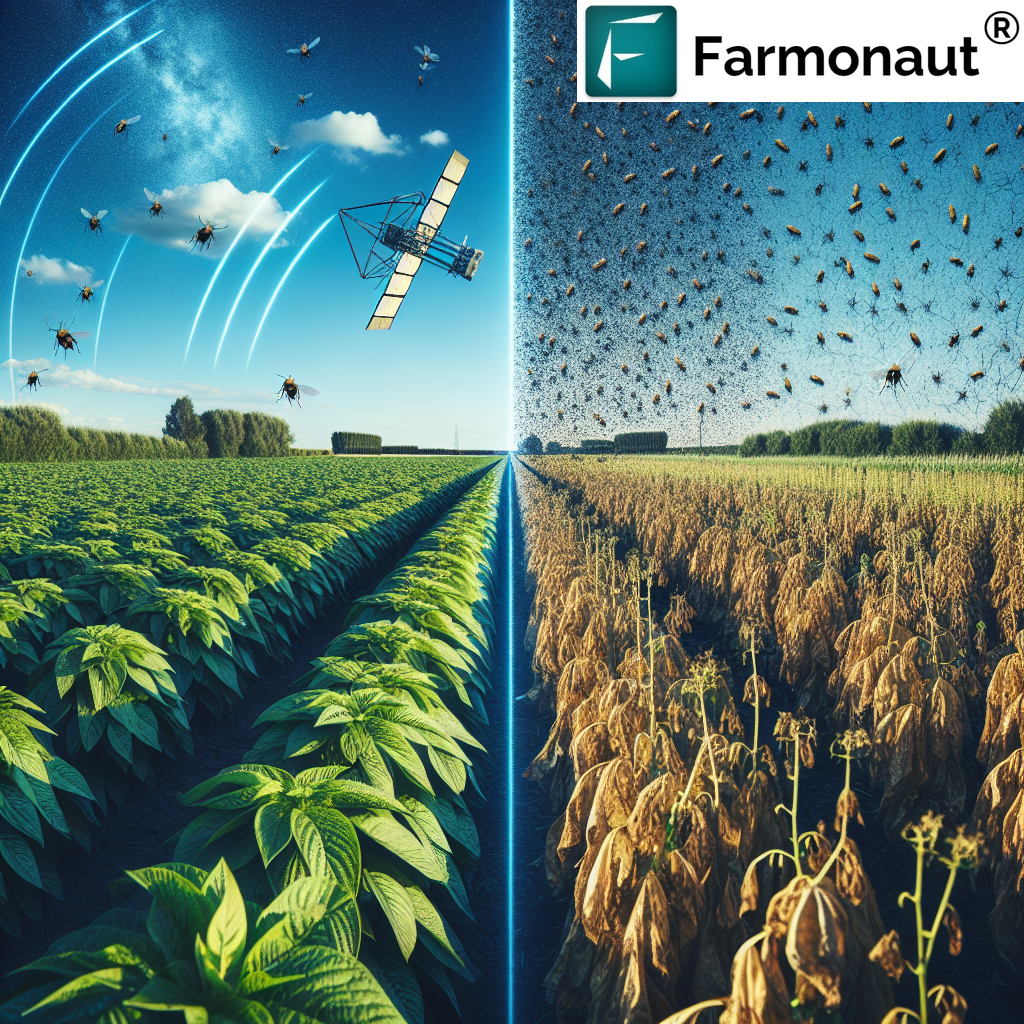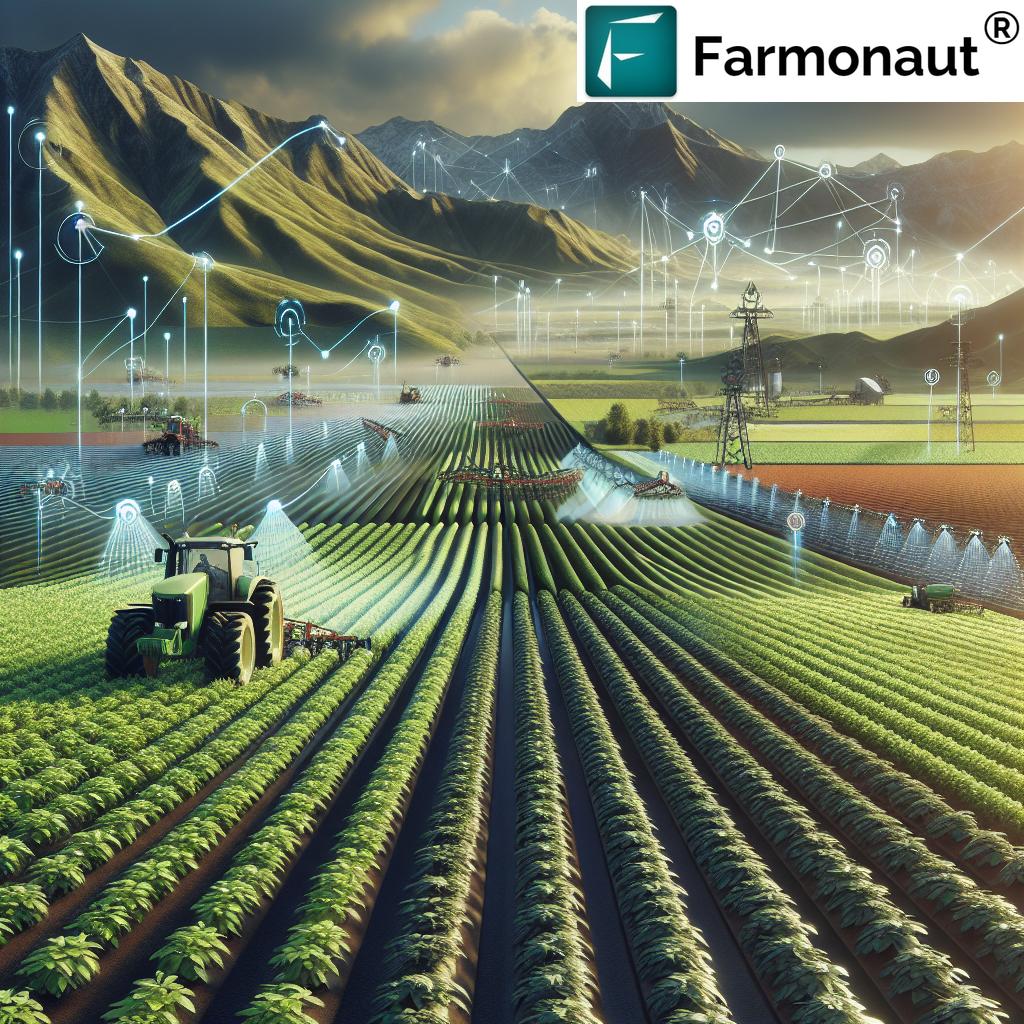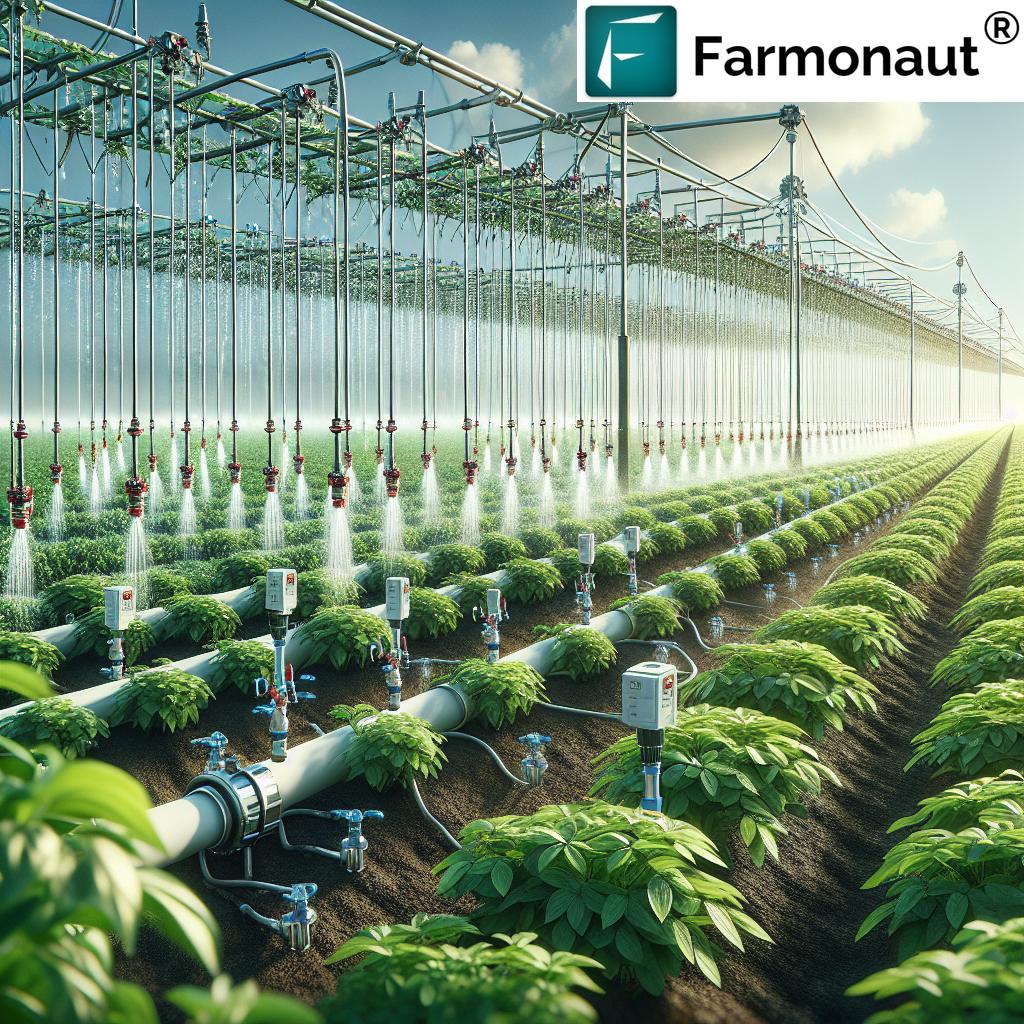Artificial Intelligence Agriculture 2025: Robotics & Flood Solutions
Summary: Artificial Intelligence in Agriculture – Transforming Farming in 2025
As the global population continues to rise and climate challenges intensify, agriculture faces unprecedented pressure to deliver higher yields sustainably. By 2025, artificial intelligence agriculture applications 2025 have become a cornerstone of modern farming practices, driving innovations that optimize productivity, resource management, and resilience in agriculture.
The integration of artificial intelligence with robotics, data analytics, and environmental monitoring is revolutionizing the agriculture sector, enabling precision agriculture at an unparalleled scale. From autonomous drones identifying crop health issues in real time to AI-driven flood management systems protecting food security, 2025 stands at the threshold of smarter and more resilient farming. Let’s dive deeper into how artificial intelligence applications agriculture 2025 are shaping the future.
Introduction: AI in Agriculture 2025 Overview
The agriculture landscape is undergoing a seismic transformation fueled by the adoption of artificial intelligence robotics in agriculture. With global population projected to exceed 8 billion by 2025 and the twin pressures of climate change and resource scarcity taking center stage, it’s crucial that farming systems are adaptive, optimized, and resilient.
Artificial intelligence (AI) is not just a buzzword; it’s become the engine of change across the agricultural sector. Through integration with cutting-edge robotics, machine learning, remote sensing, and IoT, agriculture in 2025 is about efficient management, improved crop yield forecasting, and effective risk mitigation against threats like flooding.
Key Drivers, Challenges, and the Case for Artificial Intelligence Agriculture Applications 2025
- Population growth: Rising demand for food and higher crop yields.
- Climate volatility: Increased frequency of extreme weather events and unpredictable conditions.
- Resource scarcity: Limited arable land and fresh water for irrigation.
- Labor shortages: Rural migration and demographic shifts.
Against this challenging backdrop, artificial intelligence agriculture applications 2025 empower stakeholders to:
- Optimize input use (fertilizer, pesticide, water), thus reducing costs and environmental impact.
- Enhance monitoring of crops, soil, and environmental conditions using autonomous and intelligent systems.
- Forecast risks such as flooding, disease outbreaks, and pest infestations using predictive analytics and real-time data integration.
- Automate repetitive tasks, enabling precision agriculture with unparalleled efficiency.
Let’s explore in detail how artificial intelligence applications agriculture 2025 are making these ambitions a reality.
Intelligent Robotics and Crop Management in 2025
Artificial intelligence robotics in agriculture have evolved from experimental prototypes to vital, large-scale systems across international farms. Central to this transformation are robots equipped with AI-powered vision and sensing capabilities.
Key Use Cases for Artificial Intelligence Robotics in Agriculture
-
Autonomous Drones:
- Equipped with multispectral and hyperspectral cameras, AI-powered drones monitor fields, capturing real-time data on crop vigor, pest infestations, and nutrient deficiencies.
- Machine learning models analyze these datasets, detect subtleties invisible to the human eye, and trigger alerts for intervention.
-
Ground Robots:
- Navigate between crop rows, using AI vision systems for real-time weed identification, precision pesticide or nutrient application where it’s truly needed.
- Reduce manual labor, increase accuracy, and minimize input waste.
-
Fleet Robotics:
- Coordinated fleets of autonomous tractors, planters, and harvesters manage complex tasks, adjusting operations for variable soil and environmental conditions.
- Fleet management platforms powered by AI enable seamless collaboration between different robotics for peak field productivity.
With artificial intelligence robotics in agriculture combined with sensors and machine learning algorithms, farms become data-driven enterprises. Interventions such as targeted pesticide application or precision irrigation are only triggered where required—directly reducing input waste, energy, and operational costs.
AI-Enabled Agronomic Analytics and Predictive Insights
Predictive analytics powered by AI and cloud computing orchestrate a new era of proactive and sustainable agricultural management. By integrating weather data, soil measurements, satellite imagery, and historical crop performance records into advanced AI models, farmers can:
- Receive accurate predictions about optimal planting dates and expected yields.
- Mitigate risk factors like potential pest, disease, or weed outbreaks and extreme weather events.
- Tailor management practices (fertilizer, irrigation, harvesting) to optimize productivity for every crop and field block.
Artificial intelligence-based agricultural solutions redefine how agriculture is managed, shifting decision-making from reactive to truly proactive.
Examples of AI-Driven Analytics in Action
- Yield Forecasting: Using vast datasets captured from sensors, satellite, and drone imagery, AI models analyze patterns to predict likely outcomes for each crop, factoring in both historical and real-time variables.
- Soil Health Diagnostics: AI algorithms interpret data from in-field and remote sensors to provide real-time diagnostics on soil fertility, structure, and irrigation status, facilitating precision interventions.
- Market Trend Analysis: Some artificial intelligence-based agricultural solutions incorporate global commodity data to guide farmers on the most profitable crops or rotations based on projected market changes.
Want to track your farm’s carbon impact? Farmonaut offers advanced carbon footprinting for agricultural operations, giving farmers and businesses the data-driven insights needed to balance productivity with environmental responsibility.
Artificial Intelligence Flooding Prediction and Resilient Farming Systems
Flooding has long plagued agricultural regions globally, with climate change amplifying the frequency and severity of such events. In 2025, AI-based flood prediction and management systems are proving instrumental in building risk-resilient farming.
How Artificial Intelligence Flooding Solutions Work
- Data Integration: AI models digest hydrological, rainfall, and terrain data (often from satellites, weather stations, and IoT devices).
- Pattern Analysis: Using machine learning, these models learn to spot early warning trends, issuing alerts before catastrophic events.
- Automated Response: Integration with AI-controlled infrastructure (including water gates and drainage systems) enables immediate, targeted mitigation—protecting both soil quality and crop health.
- Decision Support: Farmers and authorities rely on real-time AI analytics to deploy proactive measures—from temporary relocation of equipment to adjusting irrigation schedules—to reduce vulnerability to flooding.
The synergy of artificial intelligence, machine learning, and predictive analytics gives rise to resilient, adaptive agriculture able to withstand 21st-century climate shocks.
Securing your yields with confidence: Our crop loan and insurance verification module leverages satellite and AI data to simplify the claims process and reduce fraud risk for both farmers and financial institutions.
Our (Farmonaut) Advanced AI & Satellite-Based Agricultural Solutions
At Farmonaut, we believe affordable satellite-driven insights can radically improve agricultural outcomes for everyone—from smallholders to large agribusinesses and governments. Our technology stack blends satellite imagery (including multispectral and hyperspectral data), artificial intelligence, machine learning, and blockchain to address the most pressing agriculture and flood-risk challenges by 2025.
Farmonaut’s Core Solutions for 2025 Agriculture
-
Satellite-Based Monitoring:
- Our platform provides near real-time monitoring of vegetation health (NDVI), soil conditions, and water stress—optimizing interventions and minimizing losses.
- Farmers and businesses can access our data via Android/iOS/web apps and APIs.
-
Jeevn AI Advisory System:
- This AI-powered advisor delivers tailored recommendations, weather forecasts, and risk alerts—directly to the farm dashboard.
- It analyzes satellite imagery, weather, and historical datasets to enhance productivity and improve ongoing management tasks.
-
Blockchain-Based Traceability:
- Farmonaut’s blockchain traceability tools empower users to track the journey of products across the supply chain, ensuring transparency and security.
- This is particularly valuable for food safety, export, and sustainability reporting—visit our product traceability page to learn more.
-
Fleet & Resource Management:
- With our fleet management tools, large-scale farm and mining operators can remotely track machinery, optimize logistics, and minimize unnecessary movement or idle time.
- This directly reduces operational costs, supports resilient logistics, and improves workplace safety.
-
Environmental Impact Monitoring:
- Advanced analytics for carbon footprinting, water use, and input optimization drive sustainable practices and ensure compliance with evolving regulations.
Manage your agricultural operations at scale: Our large-scale farm management platform empowers agribusinesses and cooperatives to monitor and manage tens to thousands of fields simultaneously—facilitating efficient use of land, labor, and inputs.
Robotics-Driven Mechanization and AI Integration in Farm Operations
The ongoing labor crunch in rural areas is triggering a revolution in autonomous tractors, planters, and harvesters. By 2025, integration between AI, telematics, and robotic systems will become the standard.
Key Benefits of Artificial Intelligence Robotics in Agriculture
- Autonomous Fleet Management: AI-equipped tractors and harvesters use advanced navigation systems—adjusting routes, speeds, and implement settings in response to real-time soil and crop data.
- Coordinated Fleet Operations: Using AI fleet management platforms, multiple autonomous vehicles collaborate on scheduling, path planning, and avoidance of overlaps or missed areas, driving overall efficiency.
- Labor Independence: By reducing dependence on manual workers for repetitive or hazardous tasks, farms boost resilience and scalability.
- Precision Planting & Harvesting: Robotics enable per-plant variable seed rates, real-time yield monitoring during harvest, and rapid area coverage—even under adverse weather conditions.
- Reduced Costs & Waste: Each input (seed, fertilizer, chemical, fuel) is applied only where and when it’s needed, drastically reducing costs and environmental burdens.
Robotics, when underpinned by AI analytics and environmental monitoring, allow for precision farming at an unmatched scale. This also opens doors for new business models in equipment sharing, on-demand robotics-as-a-service, and cloud-based farm management solutions.
Looking for agronomic advice specific to plantations or forest crops? Our Plantation and Forest Crop Advisory service gives tailored recommendations using satellite data and AI analytics for highly specialized management.
Comparison Table: Estimated Impacts of AI & Robotics in Agriculture by 2025
Data reflects global projections for 2025 based on industry reports, academic analyses, and Farmonaut technology benchmarks. Actual results may vary by region, crop type, and farm scale.
Future Advancements: Artificial Intelligence Agriculture Applications 2025 & Beyond
Artificial intelligence agriculture applications 2025 are just the beginning of a continuing journey. Here’s how the field is expected to evolve through the second half of this decade and beyond:
- Internet of Things (IoT) Deep Integration: Sensor networks in fields and livestock units will provide granular, hyper-localized data, further personalizing recommendations and interventions.
- Genomics & AI Breeding Programs: By integrating plant genomics data, AI models will enable the identification of optimal seed varieties for specific field conditions and climate scenarios.
- Augmented Reality (AR) in Training: Immersive education will allow farmers to visualize AI predictions, ideal interventions, and management strategies in-field and in real time.
- Blockchain for Complete Farm-to-Fork Traceability: Still in its early phases, next-generation blockchain platforms, including those from Farmonaut, will underlie national-level traceability and compliance efforts.
- Smarter Platforms for Smallholders: By lowering cost and usability barriers, upcoming artificial intelligence-based agricultural solutions will increasingly empower resource-constrained farmers in developing regions to benefit from next-gen technology.
- Enhanced Food Security Measures: By mitigating losses from flood and extreme weather, monitoring soil health, and integrating climate risk analytics, AI technology will help regions prepare for more complex threats to food systems.
FAQ: Artificial Intelligence Applications in Agriculture 2025
-
Q: What is the impact of artificial intelligence robotics in agriculture on smallholder farms?
AI-driven robotics can make precision agriculture more accessible and less labor-intensive for smallholder farmers by automating critical monitoring and intervention tasks, and by providing actionable insights via mobile apps and remote sensing.
-
Q: Can AI really predict and help prevent flooding on farms?
Yes. Artificial intelligence flooding prediction systems integrate weather, hydrology, terrain, and crop data to forecast flood risks, enabling both automated and manual interventions that can reduce flood-related damage by up to 30%.
-
Q: How does AI improve sustainability in agriculture?
By optimizing input use, minimizing waste, facilitating precision interventions, monitoring carbon footprint, and encouraging climate-resilient practices, AI enhances both environmental and operational sustainability.
-
Q: What are some barriers to widespread adoption of artificial intelligence agriculture applications 2025?
The main barriers include infrastructural limitations, data privacy concerns, initial investment costs, and gaps in digital literacy—especially in developing regions. However, modular, affordable solutions like ours at Farmonaut are working to bridge these divides.
-
Q: Are AI solutions only for large farms?
No. Increasingly, cloud-based, app-driven, and subscription-based platforms are democratizing AI access for small and medium-scale farmers globally. Farmonaut, for instance, is designed with scalability and affordability in mind.
Conclusion: Transforming Farming for a Sustainable Future
By 2025, artificial intelligence agriculture applications 2025 have firmly established their role as a transformative force in global food production. The integration of AI, robotics, and advanced analytics has
- transformed how fields are monitored,
- enabled unprecedented levels of predictability and resilience,
- empowered farmers to make data-driven choices,
- reduced vulnerability to climate extremes, especially flooding,
- and made agriculture more sustainable, transparent, and productive for all.
As “smart farming” continues to evolve, the synergies between artificial intelligence, robotics, satellite technology, and innovative data platforms will ensure humanity can meet the challenges of food security, resource limitations, and climate volatility—well beyond 2025.
To harness the benefits of the AI-driven agriculture revolution, choose scalable, user-friendly, and reliable solutions like those offered by Farmonaut—the cutting-edge satellite and AI-powered platform for every farm, business, and government.
Need to enhance transparency and trust in your supply chain? Explore how Farmonaut’s Traceability solution is setting the new standard for secure, transparent, and efficient agricultural supply chains in 2025.
Farmonaut Apps and API Access
Experience Farmonaut’s suite of AI-powered agricultural solutions across devices:
-
API integration for developers:
- Seamlessly connect Farmonaut insights into your own platforms with our API.
- Visit our API Developer Docs for detailed integration guidance.
Farmonaut Subscription Plans
Join thousands of forward-thinking farmers, agribusinesses, and governments leveraging Farmonaut. Our flexible subscription packages are designed to scale with your needs, putting artificial intelligence-based agricultural solutions within everyone’s reach.











